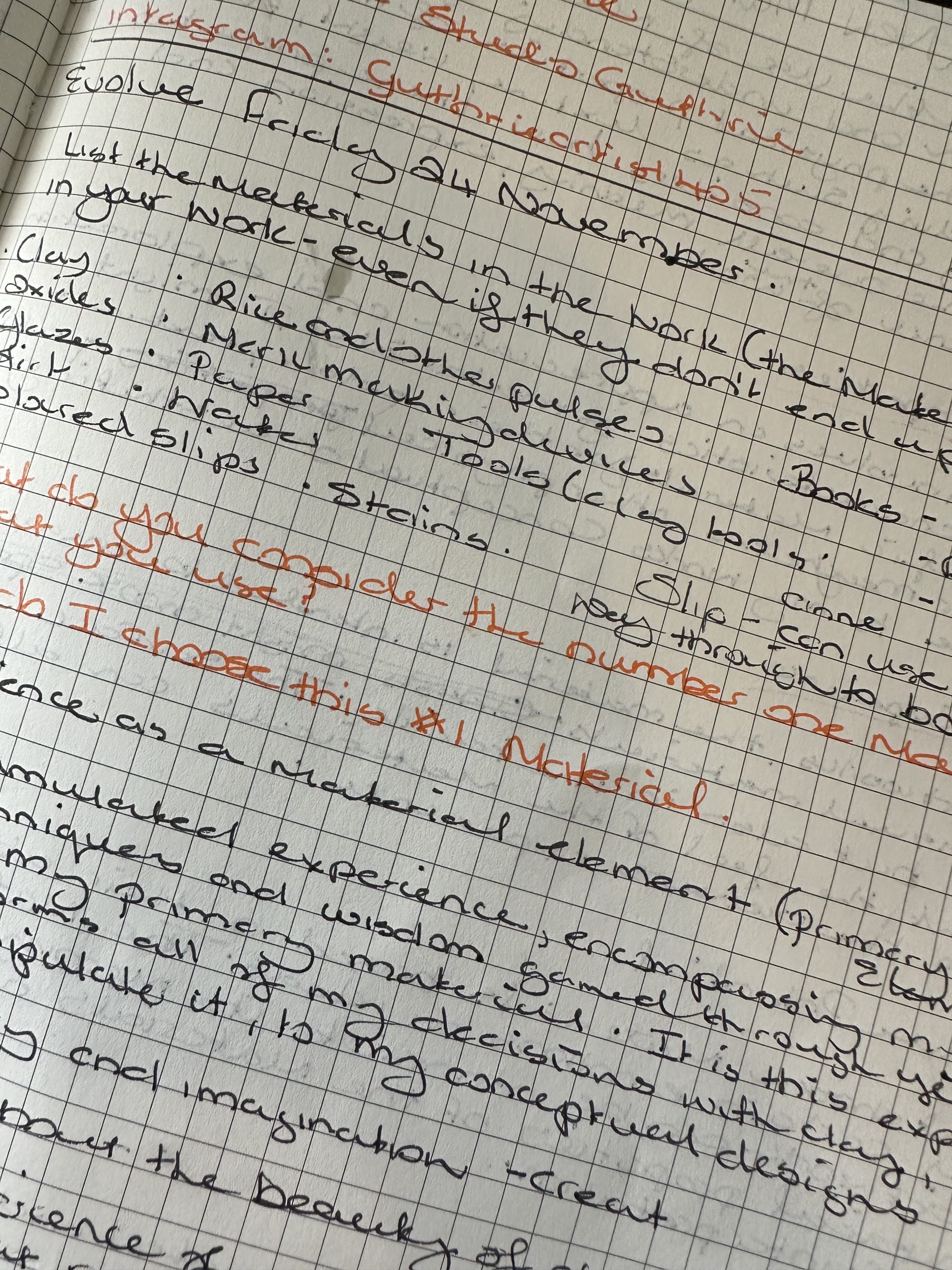Last week in the Evolve mentoring program we focused on the subject of materials and materiality. We were asked to write down all the materials we use in our practice. I wrote up a list that went something like this: Clay, glazes, oxides etc…. then we were asked to consider what we thought was the number one material that we use, I wrote down:
“My accumulated experience, encompassing my skills, techniques and wisdom gained through the years of my practice is my primary material”.
During these insightful discussions, Pie Bolton, a fellow mentee, brought up research as her primary material. This resonated strongly with me, considering the significant role research plays in my own practice. It’s this foundational element that shapes my approach to the physical materials I interact with daily.
At the end of the writing and exploring session, Amy Kennedy gave us Anni Albers’ poignant essay “Material as Metaphor.” Albers eloquently articulates the universal struggle of artists to express the invisible internal world, a challenge that’s familiar terrain in my journey with ceramics. Her words underline the necessity for artists to bring their internal musings into the tangible world, using both light and material as translators.
Albers delves into the nature of materials, recognising their inherent laws; some dictated by nature, others crafted by human hands. This encompasses a broad spectrum, from the physicality of substances like clay to the abstract worlds of sound and language. Her insights reveal that materials are far from passive; they engage us in dialogue, speaking a language we must learn to understand and respect.
Reflecting on how we find our mediums, Albers suggests an almost serendipitous discovery, akin to a material whispering to the artist, beckoning to be shaped. It’s a perspective that mirrors my own encounters with clay, an ever-present reminder of the reciprocal relationship between artist and medium.

The Evolve program’s introduction to Albers’ article prompted me to re-examine the dynamic process of creation. As Albers shares her journey from textiles to printmaking, she illustrates the fluidity of moving between mediums—carrying the language of one material to the next, always in a state of learning and adaptation.
What strikes a chord is Albers’ assertion that material is not merely a means to an end but a vibrant participant in the artistic process. Her insistence on the necessity of listening, of entering a harmonious exchange with our materials, is a lesson in humility and the true essence of creativity.
In her concluding thoughts, Albers, alongside Maximilian Schell, frames art as the ultimate realisation of dreams. This resonates with the core of my artistic philosophy—seeing the act of creation not just as making but as a form of dialogue. It’s this subtle yet profound tuning into our chosen materials that paves the way to innovation and realisation in our art.
I think these reflections serve as a reminder of the importance of staying receptive to the wisdom our materials offer. It encourages me to remain open to the possibilities that arise when we truly listen to our medium, allowing for a collaborative creation process that transcends mere form and function.
I have read this also and have loved wglhat Annie says as well..it is my experience with my medium, felt ,as well.
Hi Wendy, I really enjoyed the article and agree that our individual connection to our materials that helps us to innovate and sometimes make really good work. THanks for leaving a comment 🙂